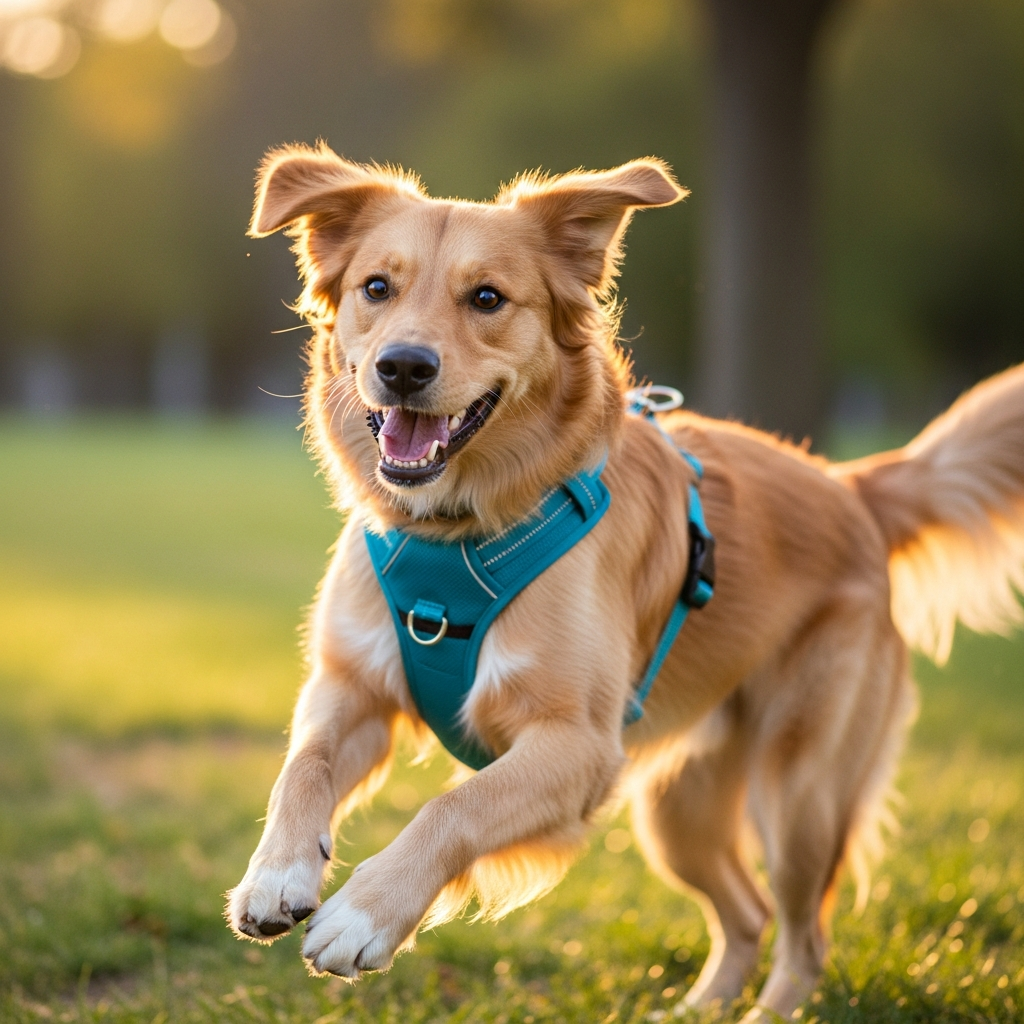Struggling with a dog that pulls on walks can be both exhausting and frustrating, posing potential danger for both you and your pet. Constant pulling can result in poor leash manners and even lead to injury. However, the right collar or harness has the potential to transform walk time into a pleasant experience for both of you.
What Types of Collars Work Best for Pulling Dogs?
When it comes to dogs that pull, there is no one-size-fits-all solution. More than just a regular collar is needed for these situations. Here's an overview of the most common collar types and their effectiveness in managing pulling:
- Flat Collars:
Not suitable for pullers, as they are primarily used for ID tags and casual wear, offering minimal control when a dog pulls. - Martingale Collars:
Ideal for moderate pullers, these collars tighten slightly under tension, providing better control without choking the dog. Originally designed for greyhounds and other narrow-headed breeds, they are now widely utilized for training and walking. - Prong Collars:
Effective but controversial, these collars provide correction by applying even pressure around the neck. They should only be used under professional guidance and are not suitable for every dog. - Head Collars (such as Halti or Gentle Leader):
Suited for strong pullers, these collars work similarly to a horse halter—when the dog pulls, its head turns back gently, discouraging forward motion. When properly used, it is a humane method, but some dogs may require time to adjust.
Are Harnesses Better Than Collars for Pulling?
Certainly, many trainers and veterinarians advocate for the use of no-pull harnesses for dogs that pull on the leash.
- Front-Clip Harnesses:
These harnesses attach at the chest and redirect your dog’s motion to the side when they attempt to pull, making them valuable for training leash manners. - Dual-Clip Harnesses:
Equipped with clips at the front and back, these harnesses provide flexible control options. For enhanced steering power, a double-ended leash can be utilized. - Tactical & Padded Harnesses:
For owners of large or strong dogs, these harnesses offer additional durability, support, and comfort, particularly during extended walks or hikes.
How to Choose the Best Collar or Harness for a Pulling Dog?
Here are essential tips to help you choose the best collar or harness for a pulling dog:
- Assess Your Dog’s Pulling Strength:
Dogs that pull lightly may fare well with a martingale, while strong pullers are likely to benefit from a front-clip harness or head halter. - Measure Correctly:
Ensure a proper fit to prevent discomfort or potential escape. Always measure your dog’s neck and chest and carefully follow sizing charts. - Comfort is Key:
Opt for padded collars or harnesses made of breathable materials such as mesh or soft nylon to prevent chafing. - Training Goals:
Consider whether you aim to reduce pulling or reinforce leash manners. Choose gear that aligns with your training method—positive reinforcement generally works best with most tools.
Are Training Collars Safe?
Training collars such as prong collars or e-collars can be beneficial in specific cases, but it is crucial to use them correctly and under the guidance of a professional dog trainer. Overuse or misuse of these tools can lead to fear, injury, or behavioral issues.
Many owners find that consistent positive reinforcement, coupled with the appropriate walking equipment, proves to be far more effective and humane.
Common Mistakes to Avoid
Common Mistakes to Avoid:
- Choosing the Wrong Size:
Ensure the collar fits correctly to prevent it from slipping off or choking your dog. There should be enough space to fit two fingers between the collar and your dog’s neck. - Using Force-Based Tools Without Knowledge:
Tools such as shock, prong, or choke collars require proper technique to avoid causing harm. - Ignoring Your Dog’s Behavior:
If your dog pulls due to anxiety or reactivity, it's important to understand that gear alone may not solve the issue. Consider looking into behavior training to address the root cause.
What's Trending in Collars for Pullers?
At RAYSUNPETS, we've observed a rising demand for the following:
- No-pull reflective harnesses designed for nighttime walks.
- Personalized padded collars featuring engraved buckles for both comfort and identification purposes.
- Breathable tactical harnesses tailored for active or working breeds.
Many of our clients also value the convenience of quick-release buckles and durable leash attachment points, particularly for stronger dogs.
In conclusion, the most suitable collar—or more likely, harness—for a dog that pulls depends on factors such as your dog’s size, breed, and walking style. For most pullers, a front-clip harness or head collar is often the safest and most effective choice.
It's important to remember that tools alone cannot rectify leash behavior. For the best results, it's essential to combine the right walking gear with positive reinforcement training.
If you require assistance in making a choice, rest assured that at RAYSUNPETS, we specialize in providing customized solutions to meet every dog’s walking needs.
Cindy Long is the Sales Manager of Raysunpets and a pet lover with over 12 years of experience in exporting pet products. She specializes in providing customized dog chest carriers, leashes and pet accessory solutions for the European and American markets, always focusing on the real needs of customers and pets, and is committed to creating high-quality, practical and comfortable products that allow fur kids to live happier lives.


